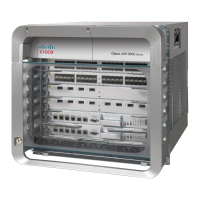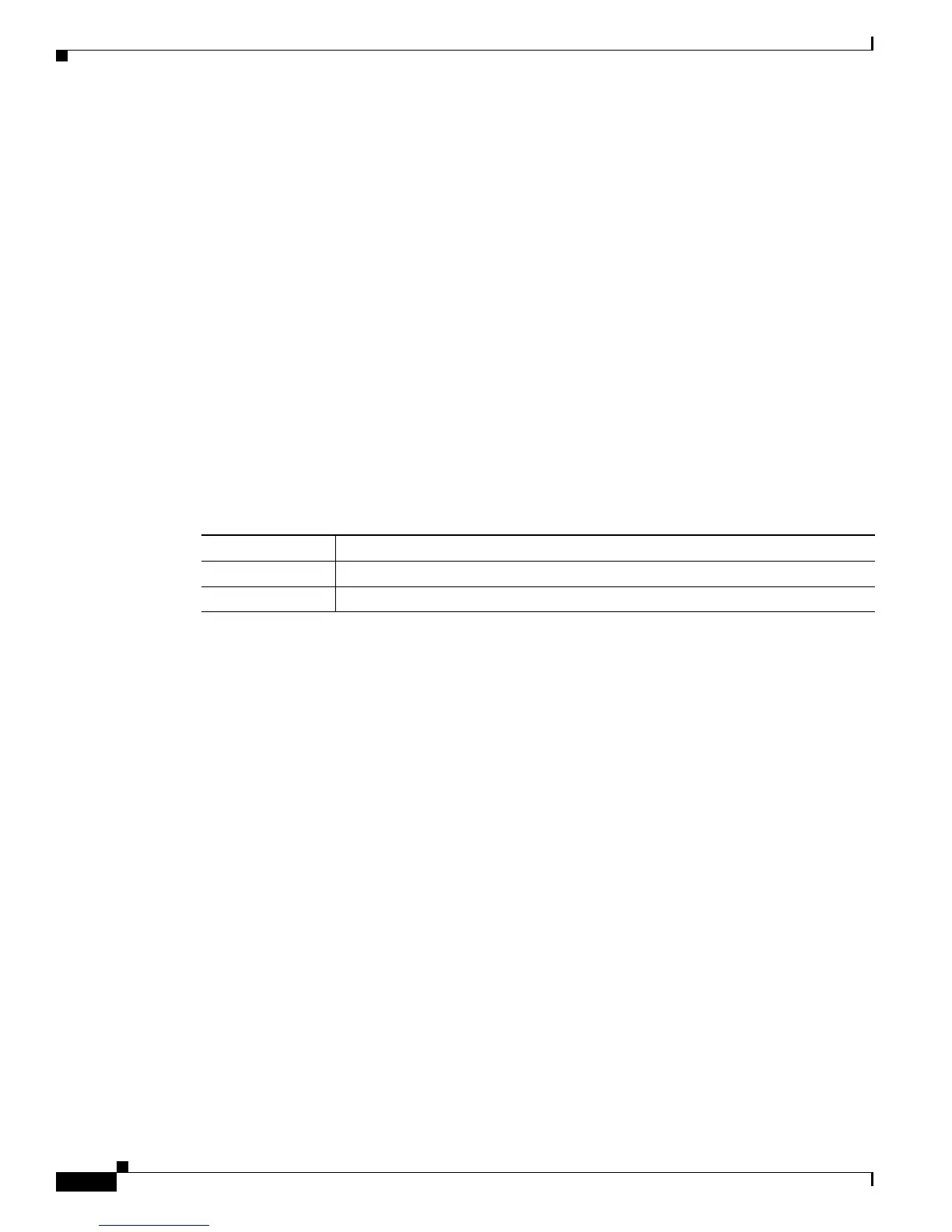A-156
Cisco ASR 9000 Series Aggregation Services Router Getting Started Guide
OL-28417-02
Chapter Understanding Regular Expressions, Special Characters, and Patterns
Pattern Alternation
The order for matches using multipliers (*, +, and ?) is to put the longest construct first. Nested
constructs are matched from outside to inside. Concatenated constructs are matched beginning at the left
side of the construct. Thus, the regular expression matches A9b3, but not 9Ab3 because the letters are
specified before the numbers.
Pattern Alternation
Alternation can be used to specify alternative patterns to match against a string. Separate the alternative
patterns with a vertical bar (
|). Only one of the alternatives can match the string. For example, the regular
expression codex
|telebit matches the string codex or the string telebit, but not both codex and telebit.
Anchor Characters
Anchoring can be used to match a regular expression pattern against the beginning or end of the string.
Table 39 shows that regular expressions can be anchored to a portion of the string using the special
characters.
For example, the regular expression ^con matches any string that starts with con, and sole$ matches any
string that ends with sole.
In addition to indicating the beginning of a string, the ^ can be used to indicate the logical function “not”
when used in a bracketed range. For example, the expression [^abcd] indicates a range that matches any
single letter, as long as it is not the letters a, b, c, and d.
Underscore Wildcard
Use the underscore to match the beginning of a string (^), the end of a string ($), space ( ), braces ({}),
comma (,), and underscore (_). With the underscore character, you can specify that a pattern exists
anywhere in the input string. For example, _1300_ matches any string that has 1300 somewhere in the
string and is preceded by or followed by a space, brace, comma, or underscore. Although _1300_
matches the regular expression {1300_, it does not match the regular expressions 21300 and 13000.
The underscore can replace long regular expression lists. For example, instead of specifying
^1300$ {1300, ,1300, {1300}, simply specify _1300_.
Ta b l e 39 Special Characters Used for Anchoring
Character Description
^ Matches the beginning of the string.
$ Matches the end of the string.

